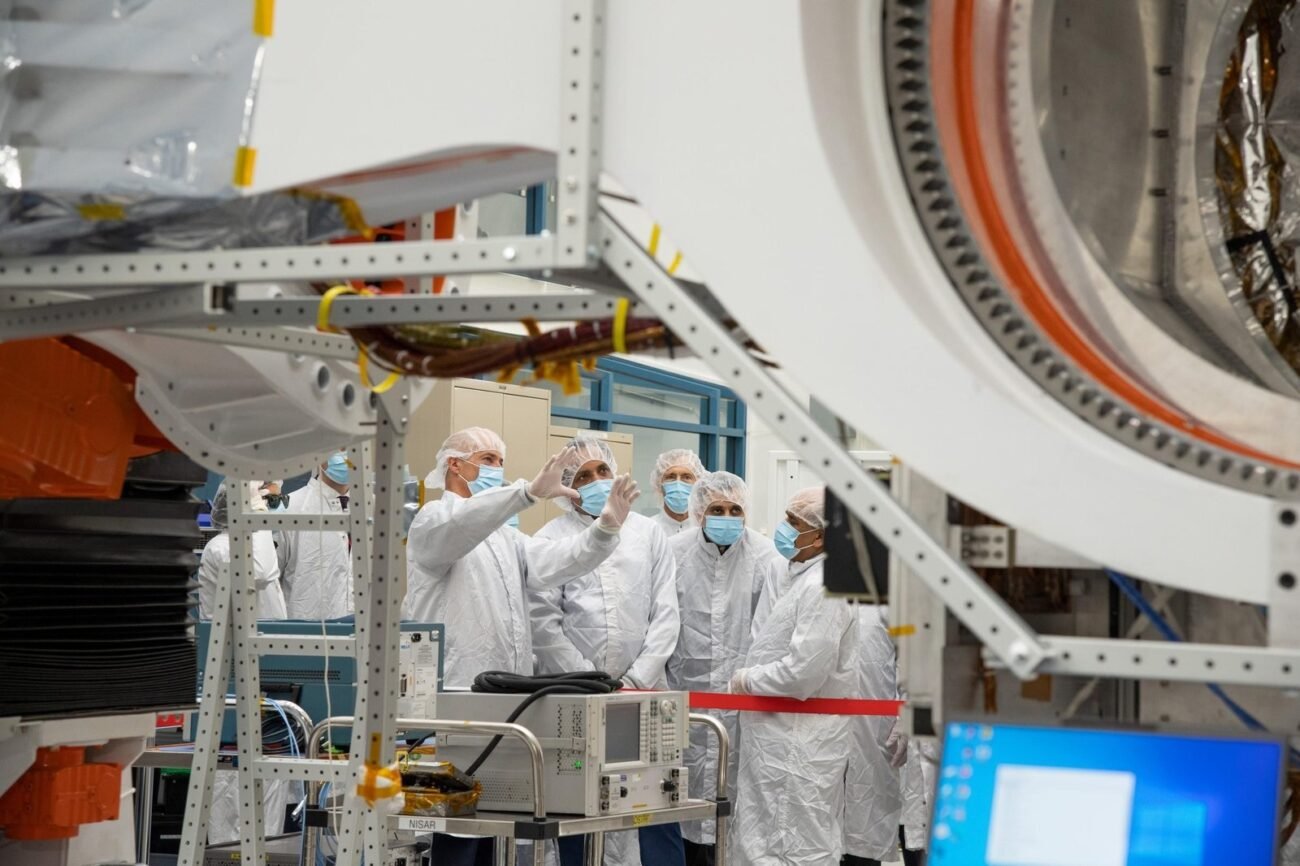NASA, ISRO Officials Gather In Pasadena To Celebrate High-Tech Mission
NASA/JPL-Caltech, ISRO officials visit NISAR at the Jet Propulsion Lab in Pasadena, CA.
By India-West Staff Reporter
PASADENA, CA – NISAR, short for NASA-ISRO Synthetic Aperture Radar, is a high-tech satellite being jointly constructed by NASA and the Indian Space Research Organization.
On February 3, American and Indian space agency officials got a glimpse of the groundbreaking system’s payload in a Jet Propulsion Laboratory clean room, here.
Officials from NASA, ISRO, JPL, and the Indian Embassy held a send-off ceremony before the instrument payload is transported to the U R Rao Satellite Centre in Bengaluru for further testing, and finally its launch in 2024.
ISRO Chairman S. Somanath, JPL Director Laurie Leshin, dignitaries from NASA headquarters and India, and members of the mission team, were present.
Somanath, Indian Ambassador and Deputy Chief of Mission Sripriya Ranganathan, and NASA officials toured the High Bay 2 clean room, where they saw engineers and technicians putting the science instrument payload through final electrical testing.
Outside the facility, in front of a scale model of the NISAR satellite, NASA’s NISAR Project Manager Phil Barela and ISRO’s NISAR Project Director CV Shrikant ceremonially broke fresh coconuts. Leshin also presented the ISRO delegation with a jar of JPL lucky peanuts.

“This marks an important milestone in our shared journey to better understand planet Earth and our changing climate,” Leshin said. “NISAR will provide critical information on Earth’s crust, ice sheets, and ecosystems. By delivering measurements at unprecedented precision, NISAR’s promise is new understanding and positive impact in communities. Our collaboration with ISRO exemplifies what’s possible when we tackle complex challenges together.”
“Today we come one step closer to fulfilling the immense scientific potential NASA and ISRO envisioned for NISAR when we joined forces more than eight years ago,” Somanath told the media present. “This mission will be a powerful demonstration of the capability of radar as a science tool and help us study Earth’s dynamic land and ice surfaces in greater detail than ever before.”
NISAR will gather radar data with a drum-shaped reflector antenna almost 40 feet (12 meters) in diameter. It will use a signal-processing technique called interferometric synthetic aperture radar, or InSAR, to observe changes in Earth’s land and ice surfaces down to fractions of an inch.
Since early 2021, engineers and technicians at JPL have been integrating and testing NISAR’s two radar systems – the L-band SAR provided by JPL and the S-band SAR built by ISRO. Later this month, they will move the SUV-size payload into a special cargo container for a 9,000-mile (14,000-kilometer) flight to India’s U R Rao Satellite Centre in the city of Bengaluru. There it will be merged with the spacecraft bus in preparation for a 2024 launch from Satish Dhawan Space Centre in Andhra Pradesh.






MURUGAPPA C MADHAVAN
/
Wondedrful achievement. Proud to be an Indian American
February 9, 2023RAJENDIR K SHARMA
/
I am happy to know that you are proud to be an Indian American. I am a second generation person of Indian origin but not born or lived in India. I wonder whether Rahual, Sonia, Lalu, Pachuri, Stalin, etc consider themselves as to be proud Indian Indian.
February 9, 2023moe
/
Why cant Indians do anything themselves?
February 9, 2023They always need hand-holding. Learn to be independent. Money given by US?
RAJENDIR K SHARMA
/
It takes years to gain confidence. India has launched many space satellites and undertaken missions to different planets. There is no harm in sharing and working with fellow democratic countries.
February 9, 2023